|
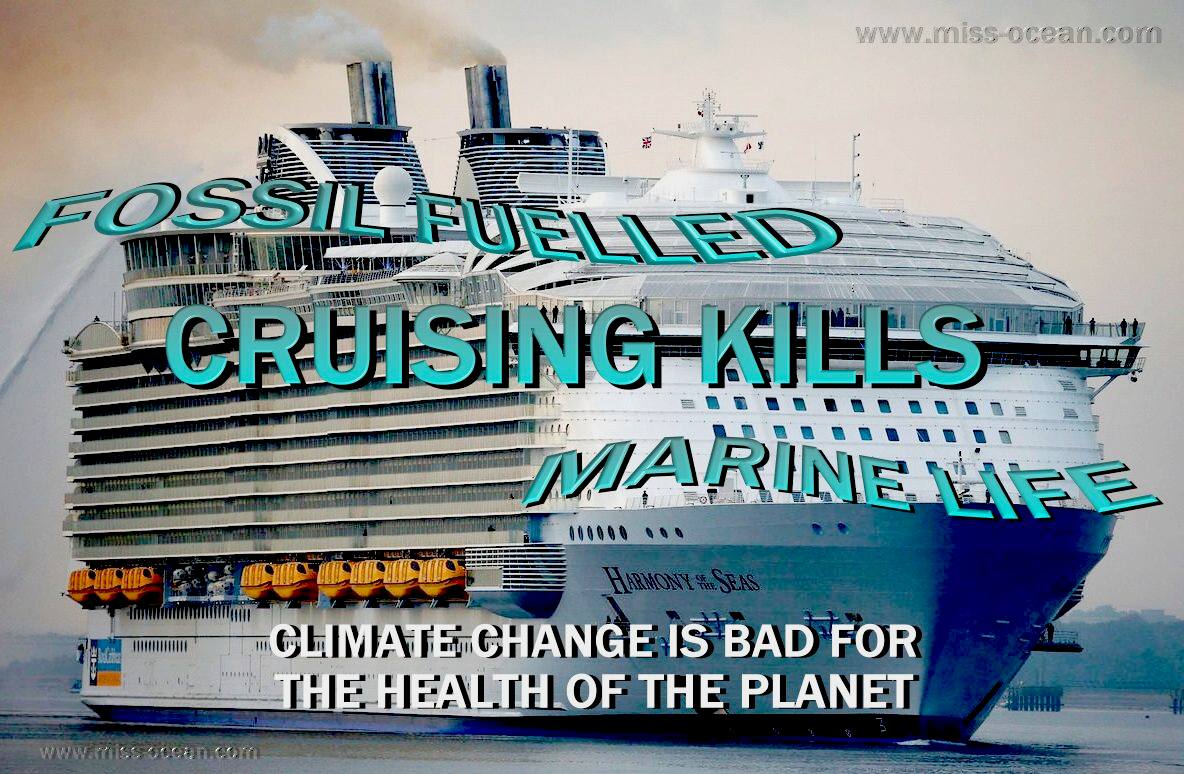
UNTHINKABLE - Okay, so we can build amazing machines,
and we know that no ship is unsinkable, but, what about climate
change? Cruise liners could be zero carbon vehicles if the political
will was there to limit the damage to our oceans from acid
build up. Any vehicle that pollutes just for pleasure should be outlawed -
gradually - but still phased out. Cargo ships are necessary to transport
essential raw materials from one country to another. That single fact
means that they can be tolerated until cleaner technology is available to
replace bunker
fuels. We must start to act responsibly, if we are to save planet
earth for generations to come.
THE
GUARDIAN - MAY 2016
When the gargantuan Harmony of the Seas slips out of Southampton docks on Sunday afternoon
(22-5-16) on its first commercial voyage, the 16-deck-high floating city will switch off its auxiliary engines, fire up its three giant diesels and head to the open sea.
But while the 6,780 passengers and 2,100 crew on the largest cruise ship in the world wave goodbye to England, many people left behind in
Southampton say they will be glad to see it go. They complain that air pollution from such nautical behemoths is getting worse every year as cruising becomes the fastest growing sector of the mass tourism industry and as ships get bigger and bigger.
|
RANKED
|
SHIP
NAME
|
No.
BUILT |
LOA
|
TEU
|
KW/TON/DWT
|
|
|
|
|
|
|
|
|
1.
|
MSC
GULSUN
|
5 |
399.9
|
23,756
|
0.379
- .509hp
|
|
2.
|
OOCL
HONG KONG
|
5 |
399.9
|
21,413
|
0.316
- .424hp
|
|
3.
|
COSCO
Shipping Universe
|
3 |
400.0
|
21,237
|
.
|
|
4.
|
CMA
CGM Antoine
de Saint Exupery
|
2 |
400.0
|
20,954
|
0.368
- .494hp
|
|
5.
|
Madrid
MAERSK
|
10 |
399.0
|
20,568
|
0.3
- .4hp
|
|
6.
|
Ever
Golden
|
10 |
400.0
|
20,388
|
.
|
|
7.
|
MOL
Truth
|
1 |
399.0
|
20,182
|
.
|
|
8.
|
MOL
Triumph
|
3 |
400.0
|
20,170
|
0.427
- .573hp
|
|
9.
|
COSCO
Shipping Taurus
|
4 |
399.8
|
20,119
|
.
|
|
10.
|
Barzan
|
5 |
400.0
|
19,870
|
0.20
- .268hp
|
According to its owners, Royal Caribbean, each of the Harmony’s three
four-storey high 16-cylinder Wärtsilä engines will, at full power, burn
1,377 US gallons of fuel an hour, or about 96,000 gallons a day of some of the most polluting
diesel fuel in the world.
In port, and close to US and some European coasts, the Harmony must burn low sulphur fuel. But, says Colin
MacQueen, who lives around 400 yards from the docks and is a member of new environment group Southampton Clean Air, the fumes from cruise liners and bulk cargo ships are “definitely” contributing to Southampton’s highly polluted air.
“We can smell, see and taste it. These ships are like blocks of flats. Sometimes there are five or more in the docks at the same time. The wind blows their pollution directly into the city and as far we can tell, there is no monitoring of their pollution. We are pushing for them to use shore power but they have resisted.”
“The liners pollute, but the road traffic that they and the cargo ships generate is also huge,” he adds.
Royal Caribbean, the US owners of the Harmony of the Seas, said that the latest and most efficient pollution control systems were used and that the ship met all legal requirements.
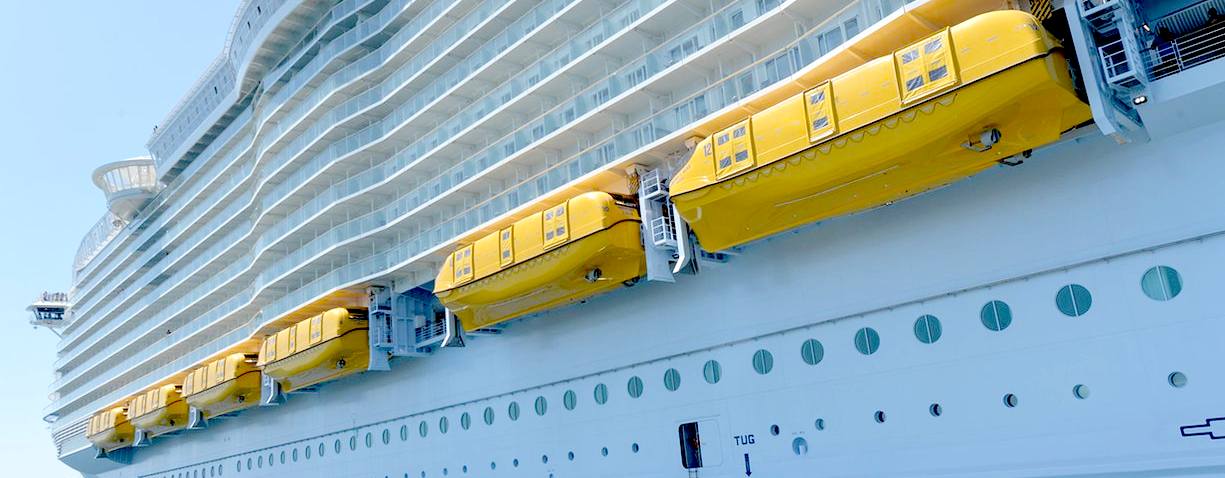
LIFEBOATS - Is
that it? Let's hope there are no icebergs on the way to New York. On the
other hand, we could do with another take on Titanic, so know yourselves
out. The burning question is whether Kate
and Leonardo
are on the guest list.
Industry body Cruise Lines International Association
(CLIA) added that companies had “invested significantly over the last decade to develop new technologies to help reduce air emissions”.
But marine pollution analysts in Germany and Brussels said that such a large ship would probably burn at least 150 tonnes of fuel a day, and emit more sulphur than several million cars, more NO2 gas than all the traffic passing through a medium-sized town and more particulate emissions than thousands of London buses.
According to leading independent German pollution analyst Axel Friedrich, a single large cruise ship will emit over five tonnes of NOX emissions, and 450kg of ultra fine particles a day.
Bill Hemmings, marine expert at Brussels-based Transport and Environment group said: “These ships burn as much fuel as whole towns. They use a lot more power than container ships and even when they burn low sulphur fuel, it’s 100 times worse than road diesel.”
“Air pollution from international shipping accounts for around 50,000 premature deaths per year in Europe alone, at an annual cost to society of more than €58bn
[$65bn],” says the group on its website.
Daniel Rieger, a transport officer at German environment group Nabu, said: “Cruise companies create a picture of being a bright, clean and environmentally friendly tourism sector. But the opposite is true. One cruise ship emits as many air pollutants as five million cars going the same distance because these ships use heavy fuel that on land would have to be disposed of as hazardous waste.”
Nabu has measured pollution in large German ports and found high concentrations of pollutants. “Heavy fuel oil can contain 3,500 times more sulphur than diesel that is used for land traffic vehicles. Ships do not have exhaust abatement technologies like particulate filters that are standard on passenger cars and lorries,” says
Rieger.
Southampton, which has Britain’s second largest container port and is Europe’s busiest cruise terminal, is one of nine UK cities cited by the
World Health Organisation as breaching air quality guidelines even though it has little manufacturing.
“Up to five large liners a day can be berthed in the docks at the same time, all running engines 24/7, said Chris Hinds, vice chair of the Southampton docks watchdog group
WDCF. “Pollution from the port is leading to asthma and chest diseases. We are now seeing more, bigger liners but also very large bulk cargo ships.”
According to CLIA, the cruise ship industry is now one of the fastest growing sectors in the mass tourism market, with 24 million passengers expected to sail in 2016, compared to 15 million in 2006 and just 1.4 million in 1980.
“The industry shows no signs of slowing down. It generated $119.9bn (£83bn) in total output worldwide in 2015, supporting 939,232 full-time equivalent jobs,” said a spokesman.
“The luxury sector is seeing the most amazing growth that it has ever seen in its history,” said Larry
Pimentel, president of Azamara club cruises.
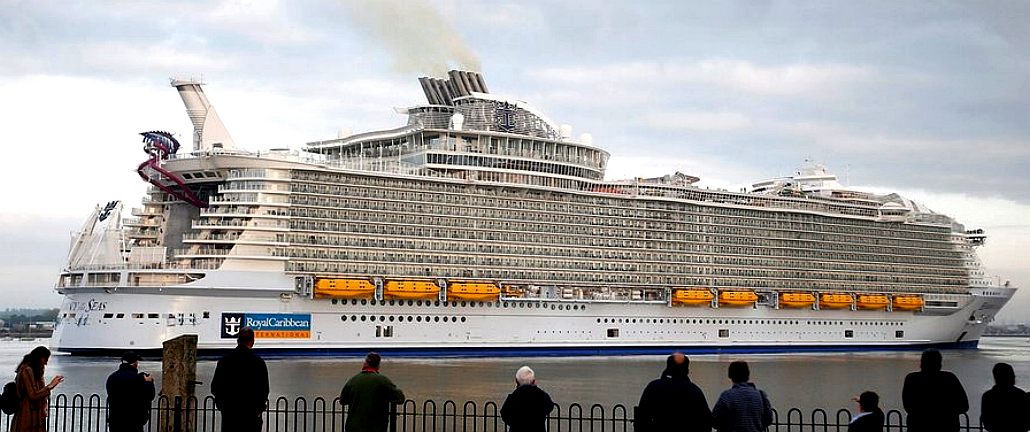
OCEAN
MADNESS - Wow!
Will we ever learn? This is one massive climate change machine, some might
say for the super rich who could not give a fig about the environment.
And, where are all the lifeboats?
It's like the designers and operators want to re-create the famous sinking
in 1912. Just think of the carbon footprint making the thing.
"Cruising Kills."
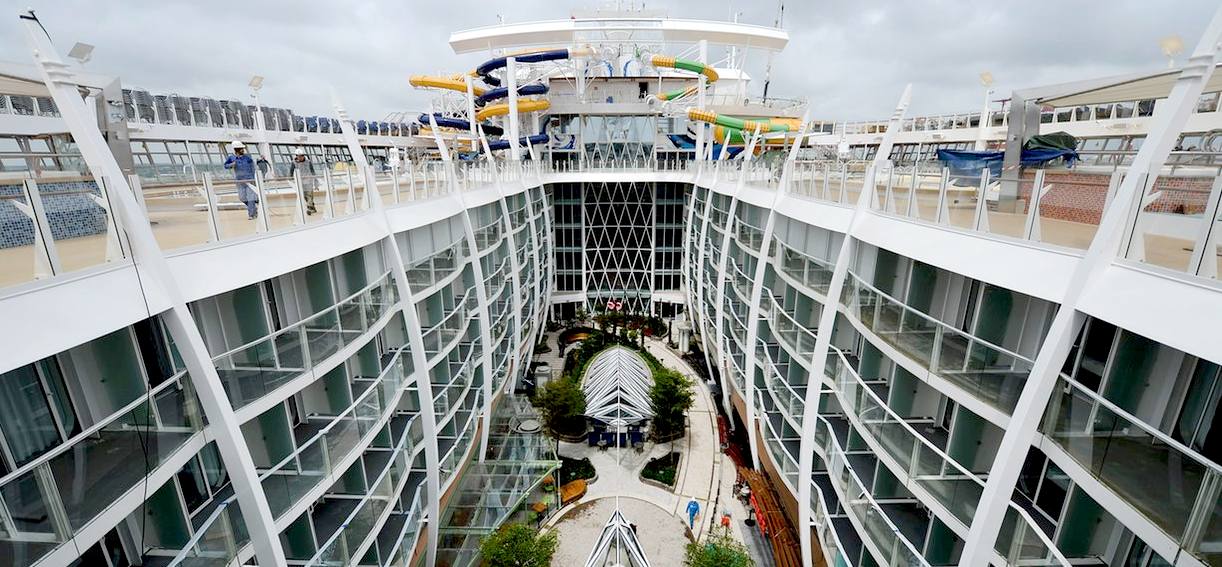
COSTA (the climate)
PLENTY -
A
large ship would probably burn at least 150 tonnes of fuel a day, and emit more sulphur than several million cars, more NO2 gas than all the traffic passing through a medium-sized town and more particulate emissions than thousands of London buses.
According to leading independent German pollution analyst Axel Friedrich, a single large cruise ship will emit over five tonnes of NOX emissions, and 450kg of ultra fine particles a day.
Bill Hemmings said: “These ships burn as much fuel as whole towns. They use a lot more power than container ships and even when they burn low sulphur fuel, it’s 100 times worse than road diesel.”
According to CLIA, the cruise ship industry is now one of the fastest growing sectors in the mass tourism market, with 24 million passengers expected to sail in 2016, compared to 15 million in 2006 and just 1.4 million in 1980.
We think this is because people do not realize the damage they are doing
by cruising.
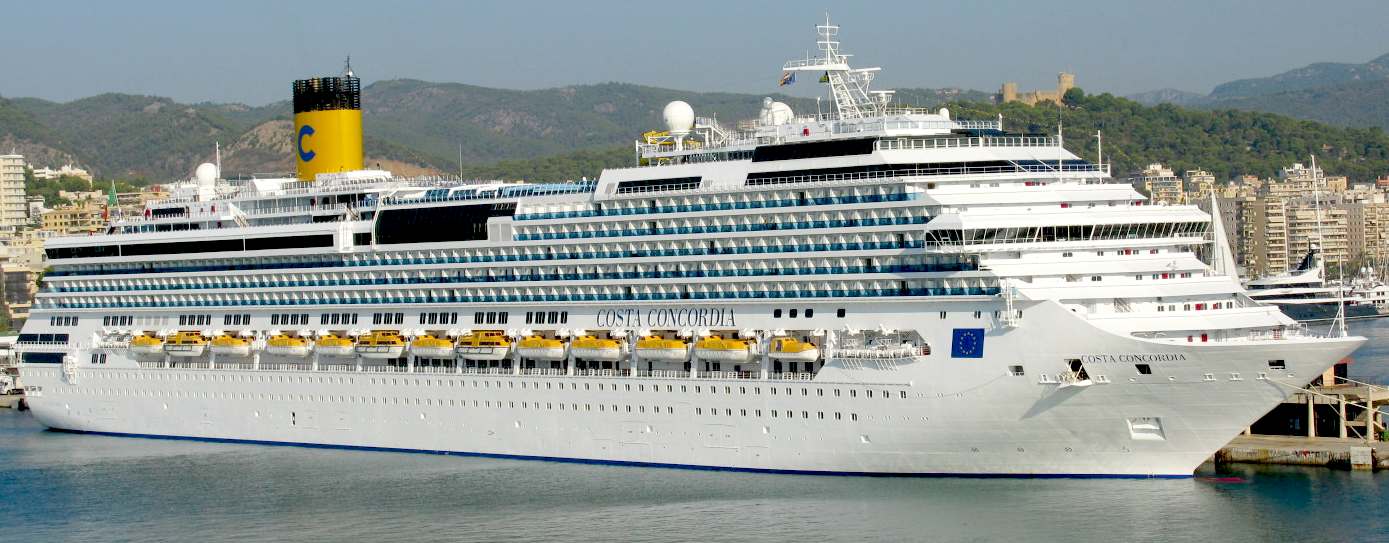
COSTA
CONCORDIA - Ring any bells? The Sea Diamond went down in 2007,
but still the Costa Concordia fell foul of another Mediterranean shore,
and that was after Titanic
in 1912. These gin palaces are a major liability in every sense. Travel
for pleasure should not be at the expense of the environment. What damage
will you be doing from cruising? Ships should carry a Government Health
Warning: "Cruising Kills."
COSTA
CONCORDIA STATS
| Class & type: |
Concordia-class
cruise
ship |
| Tonnage: |
114,147 GT |
| Length: |
290.20 m (952 ft
1 in) (overall)
247.4 m (811 ft 8 in) (between
perpendiculars) |
| Beam: |
35.50 m (116 ft
6 in) |
| Draught: |
8.20 m (26 ft
11 in) |
| Depth: |
14.18 m (46 ft
6 in) |
| Decks: |
13 |
| Installed power: |
6 × Wärtsilä
12V46C
76,640 kW (102,780 hp) (combined) |
| Propulsion: |
Diesel-electric;
two shafts
Alstom
propulsion motors (2 × 21 MW)
Two fixed pitch propellers |
| Speed: |
19.6 knots (36 km/h;
23 mph) (service)
23 knots (43 km/h; 26 mph) (maximum) |
| Capacity: |
3,780 passengers |
| Crew: |
1,100 |
IS
A CRUISE SHIP THIS SIZE IMMORAL?
MS Harmony of the Seas is an Oasis-class cruise ship constructed by STX France at the Chantiers de l'Atlantique shipyard in Saint-Nazaire,
France for Royal
Caribbean International. With a gross tonnage of 227,700 GT, she is the largest passenger ship in the world, surpassing her older sisters MS Oasis of the Seas and MS Allure of the Seas by some 2,000 gross tons, as well as 2.15 metres (7.1 ft) in length.
ACCOMMODATION
Harmony of the Seas has 2,747 staterooms, with a wide variety of types, to accommodate (at double occupancy) 5,479 guests ranging from small interior rooms through larger rooms to suites, some of which are fitted with wall-mounted 80-inch screens, covering nearly the floor to ceiling, that show the ship's environment as if through a window, named 'virtual balconies'. These screens were first fitted on the Quantum class of cruise ships. A full 43 categories of stateroom types are offered, starting at a size of 180 square feet; several types of suites are available, including the new Royal Class.
OFF COURSE
For the inaugural season to commence 7 June 2016, Harmony of the Seas will offer seven-night western Mediterranean cruises originating from Barcelona and Rome (Civitavecchia). At the end of the summer and autumn season (in late October 2016), the ship will cross the Atlantic to the United States, where she will offer seven-night eastern and western Caribbean cruises originating from Port Everglades, Florida and Port Canaveral starting in November.
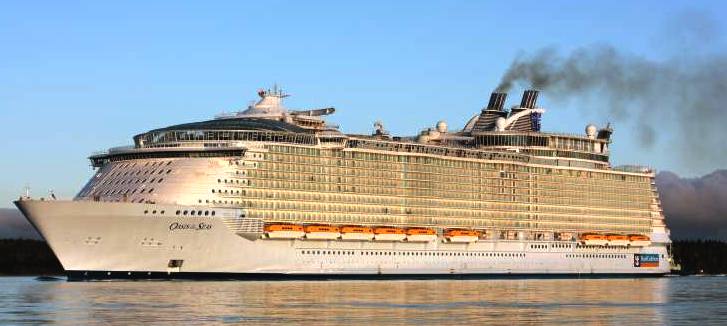
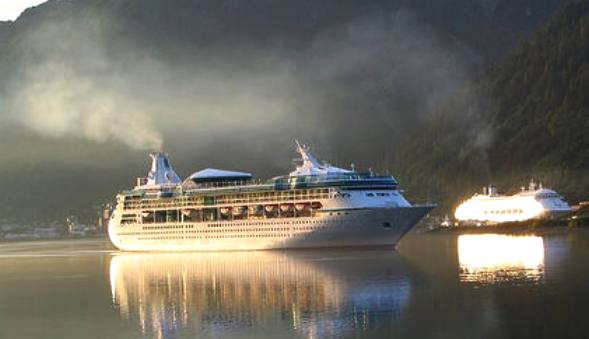
GOVERNMENT
HEALTH WARNING - If
a car smoked like the cruise liners in these pictures it would fail its
MOT as an old banger. There should be the ocean going equivalent of an
MOT for cargo ships, oil tankers and cruise liners. Or, the equivalent
of red diesel for shipping - a method of checking to see if operators
have been using outlawed dirty fuels. This and more was discussed on World
Maritime Day in Morocco in October 2014
CRUISE
LINE OPERATORS A - Z
AZAMARA
CLUB
CELESTYAL
DISNEY
MSC
OCEANIA
P&O
PRINCESS
SILVERSEA
VIKING
VOYAGES
TO ANTIQUITY
LINKS
http://www.royalcaribbean.co.uk/our-ships/harmony-of-the-seas/
http://www.royalcaribbean.co.uk/our-ships/harmony-of-the-seas/
https://en.wikipedia.org/wiki/MS_Harmony_of_the_Seas
http://www.costacruise.com/
http://www.costacruises.co.uk/
http://www.usatoday.com/story/news/world/2015/02/11/costa-concordia-captain-conviction/23237995/
http://www.theguardian.com/world/costa-concordia
http://en.wikipedia.org/wiki/Costa_Concordia
http://en.wikipedia.org/wiki/Costa_Concordia_disaster
http://www.theguardian.com/world/2014/sep/25/costa-concordia-hero-coastguard-gregorio-de-falco-italy
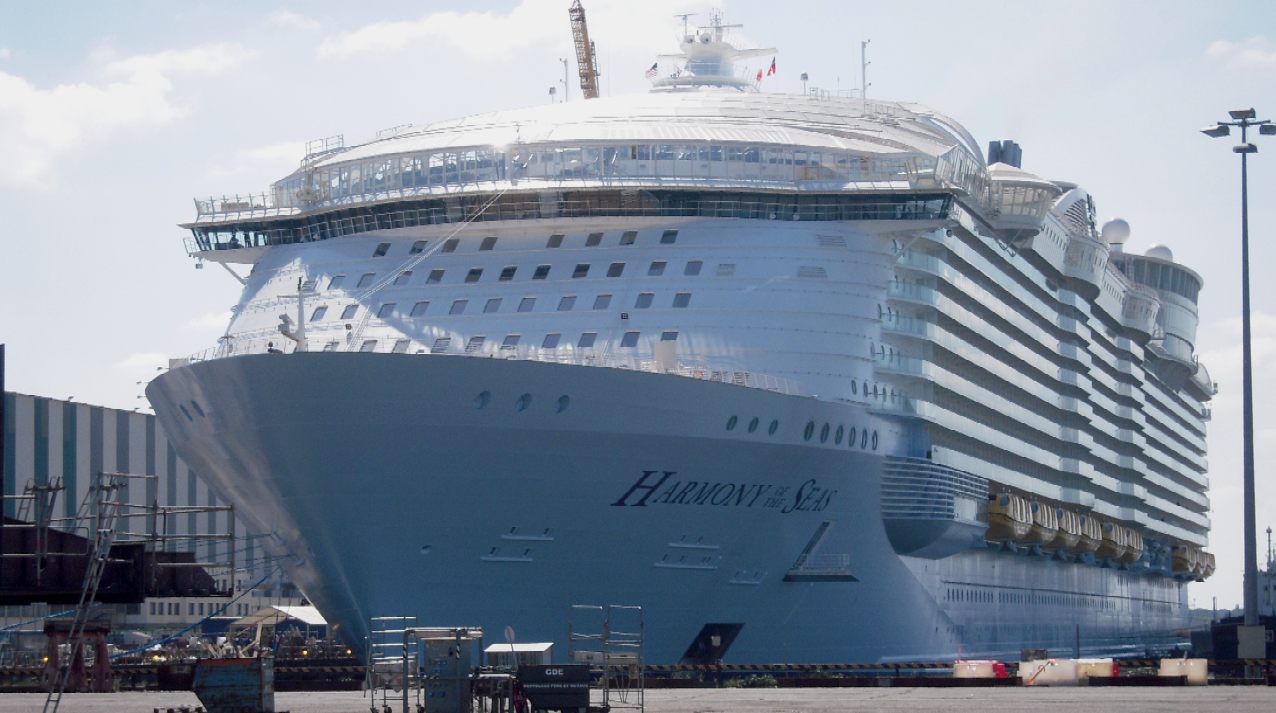
|





